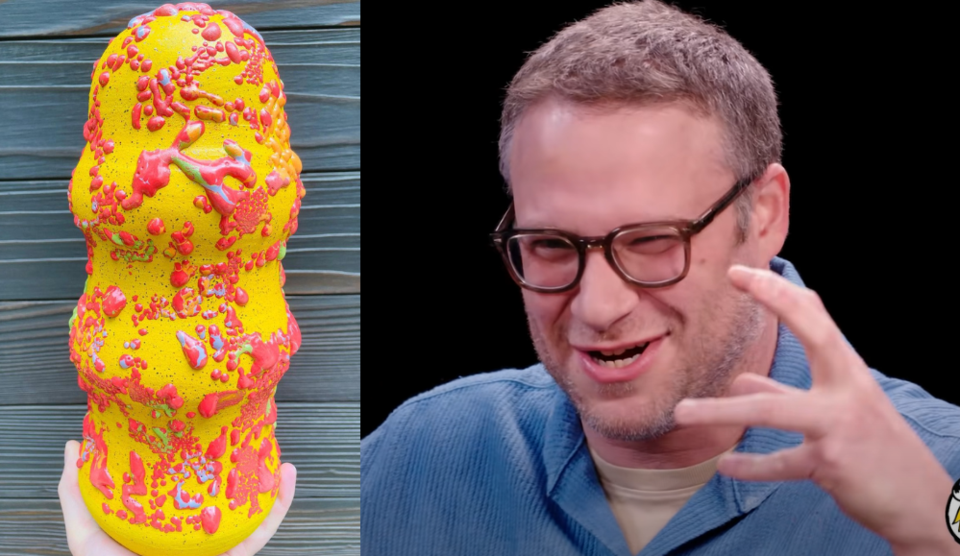Vancouver-born actor and director Seth Rogen recently told the world just how he gets the bubbling and boiling look to his unique style of pottery.
Earlier this month Rogen appeared on the Hot Ones interview show hosted by the ever-gesticulating Sean Evans from First We Feast. If you’re unfamiliar, it’s the show with hot questions and even hotter wings. The appearance was actually Rogen’s third having been joined by Dominic Cooper in 2017 and Charlize Theron in 2019.
The interview turned to pottery just as Rogen’s tongue was suffering through a 71,000 Scoville Heat Unit (SHU) hot sauce. For context, a single jalapeño pepper measures between 2,500 to 8,000 SHUs.
Sean Evans:
You’ve added a wrinkle into the definition of ‘pothead’ by getting into ceramics recently comparing it to a meditative hobby like yoga except that you get a vase at the end of your Bikram session. Do you have a go-to glaze recipe?
Seth Rogen:
I do have a go-to glaze recipe that I kinda formulated on my own. It includes magnesium carbonate is one of the main ingredients and that’s what causes the glaze to glop up like my glazes do.
If you’re not a potter this likely might not mean much but never fear. First off, a glaze is a coating applied to pottery used to decorate and waterproof an item. The glazes themselves are liquid with finely ground minerals suspended in them. It is the chemical composition of these minerals that can be adjusted to give a near-infinite combination of textures and colours.
Silica and alumina, the primary ingredients of pottery glazes, melt when they are fired in a kiln to give the finished piece that glossy or matte pottery look. However, ceramic ovens can’t reach the temperature needed to melt the silica so flux is needed to lower the melting point. There are many minerals that act as fluxes, including magnesium carbonate.
Magnesium carbonate is commonly added to glazes to make them crawl during the firing process, gathering glaze and pooling it throughout the heating and cooling cycle.




